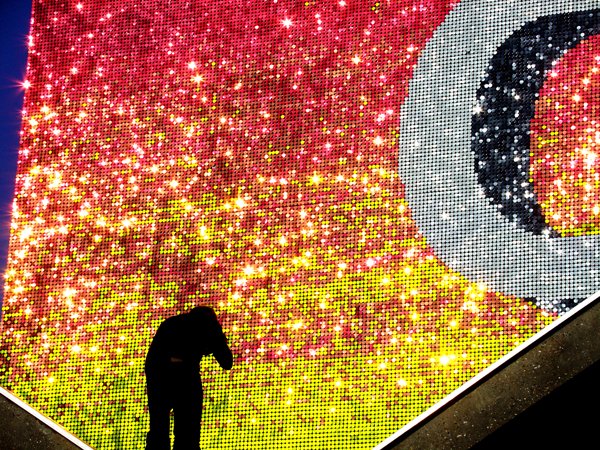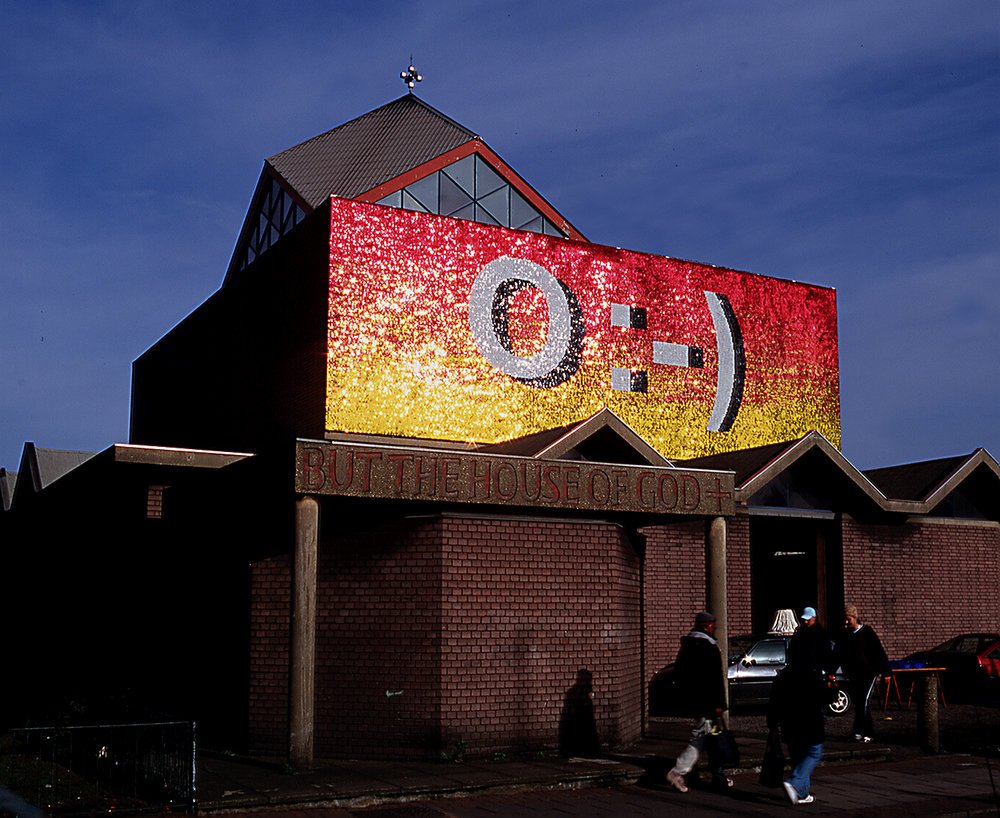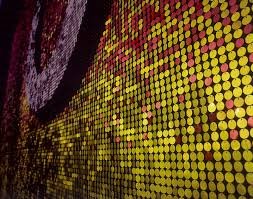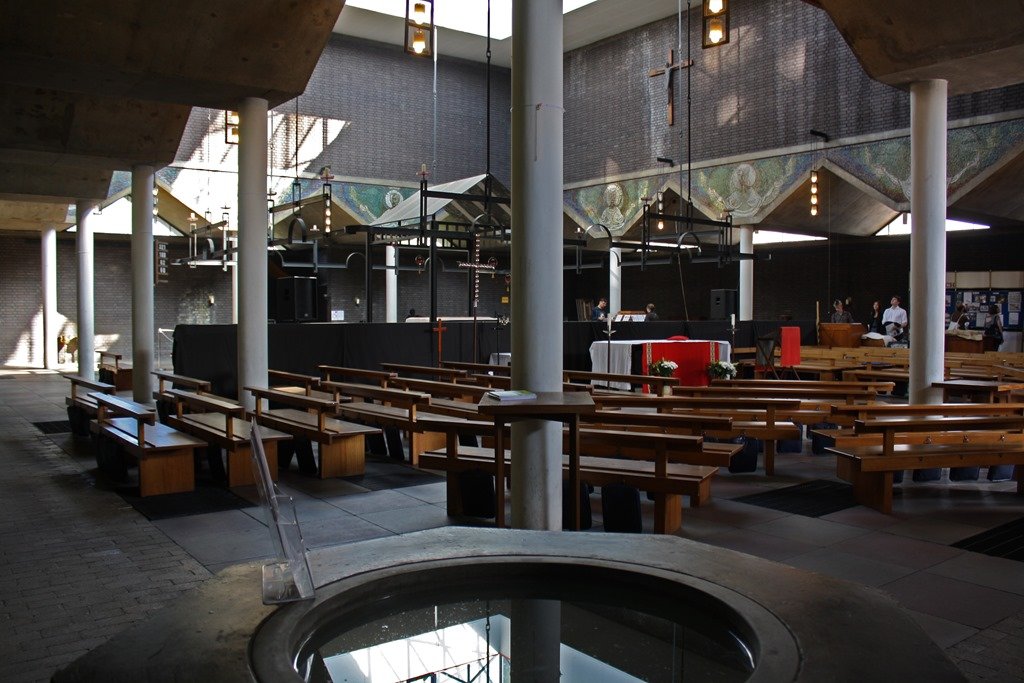‘Angel’ at St Paul’s Bow Common
Site-Specific Art with Professional Installation and Community Impact
St Paul’s is formally recognised as the most significant post-war church in Britain. By 2003, the church had established a reputation for showing art which caught the attention of Art in Sacred Places (ASP) and the artist Rose Finn-Kelcey. After plans for Finn-Kelcey to create work for a different London spiritual centre fell through, St Paul’s was selected as the venue for this site-specific, temporary, sculptural piece as part of an ASP sponsored project. The work was found favour with the local community and with contemporary art fans, and is regarded as an exemplary piece of public art.
Context
The work of Robert Maguire (architect) and Keith Murray (designer), St Paul’s was built between 1958-1960. A remarkably spare building of brick and concrete, it is a large space surmounted with a glazed lantern. One of the largest contemporary mosaic works in Britain, by Charles Lutyens, circles the upper level of the interior. St Paul’s sits in an urban landscape in Bow in the East End of London and is surrounded by heavy road and rail traffic. For decades this was one of the poorest parishes in the Diocese of London.
‘I wanted to put an image on the church that was totally expected to be there, that of an angel. But I wanted to transform it and update it into a modern and common language.’ Rose Finn-Kelcey
Objectives and Outcomes
The project aimed to investigate connections between art, faith and spirituality, identify common areas of interest between the church and visual art communities, respond to the architecture of St Paul’s, use materials related to the community and develop the artist’s practice in the visual representation of religious faith. The Rev’d at the time, Duncan Ross was aware that the churches’ location in London’s East End, a relatively poor area, meant that its community had few opportunities to visit art galleries and museums. Ross believed bringing art to the church offered a unique opportunity for locals to experience what they might not otherwise have access to.
‘I’ve pondered a lot on how – and why – this worked so well. And I think it rested on two things. On the integrity – and sheer quality – of the artist… and also on the process by which this work came into being… [Rose and Rachel] showed a deep awareness that public art… will almost always have a human context; a community being asked to embrace such art… ‘Site-specific’ is also often ‘Community-specific’.’ Duncan Ross
This project saw art transform the identity and culture of a community, freeing attitudes in a dramatic way. All previous exhibitions in the church had been restricted by opening hours but Angel was visible at all hours for five months (it was only proposed for three but was so popular that the DAC granted an extension). The piece was very much enjoyed by the public with hugely positive comments made in addition to the requested extension. The work became a local landmark and changed the way the church was seen by the community. It additionally encouraged a dialogue between younger and older generations because of its ‘text-speak’ symbolism.
Description
From the earliest conversations a relationship of trust and respect emerged between artist, curator and vicar and the church invited Finn- Kelcey to develop a work for display. Finn-Kelcey talked to members of the congregation as well as other locals before deciding on her final design to be sure that the piece reflected the area and its people.
The Church is Grade II* listed and highly regarded so there were many issues for the DAC to consider before granting permission for the installation. Concerns about the impact on the fabric of the building were raised, but these were all accounted for by the artist’s installation strategy which was remarkably non-invasive.
Ross regularly updated his congregation about the artwork and displayed posters to advertise its upcoming unveiling. The artist attended services at the church as well as some Sunday school classes to consult with the congregation. Local schools and other community groups were also consulted before her design was finalised. The piece was created off-site, transported to the church in sections and then installed by hired professionals.
Church life continued while the piece was installed. The usual Tuesday Community Sale, for example, was held while workmen carried the work through on racks and tables. Deinstallation was a smooth process but occurred slightly prematurely; the DAC had granted an extension allowing the piece to remain for several more weeks when it was removed. However, the boards on which the work was mounted had degraded and the work was deemed insufficiently stable and dismantled earlier than planned.
Appraisal
One great success of the installation was its ability to engage all who passed by, to inspire and lift spirits and to create a sense of awe and something greater than the daily grind. The view of the church community was that many were inspired and amazed by Angel and had their spirits and hearts lifted by the artwork.
‘It gave rise to a reflection in the community and had a real impact and was very related to the spiritual journey which the individuals were on… It had touched me deeply both aesthetically and spiritually. Its presence brought a deep joy which is impossible to describe.’ Duncan Ross





